
Carolyn Keller
Contributor
Carolyn Keller is a freelance writer, teacher and former journalist with a PhD in English from Binghamton University. She has traveled throughout Latin America, including extended stays in Mexico and Ecuador.
Learn more about Carolyn Keller
August 6, 2022
Change comes from Exchange: Indigenous education practices sustain Native cultures in the 21st century
By Carolyn Keller and Charles Sunday
If you live in the U.S., it’s easier than it should be to relegate Native American experience to history. When we do get news about Native American and First Nations communities in North America, post-elementary school narratives – the ones beyond construction paper hats as Thanksgiving rolls around – tend to focus on the traumas of our history. The Trail of Tears. Smallpox blankets. The discovery of unmarked graves at the site of a former residential school for indigenous peoples in Canada. The 10,000 to 15,000 indigenous children who’ve been considered missing since the closure of such schools in 1996 (Herdon, July 16, 2021).
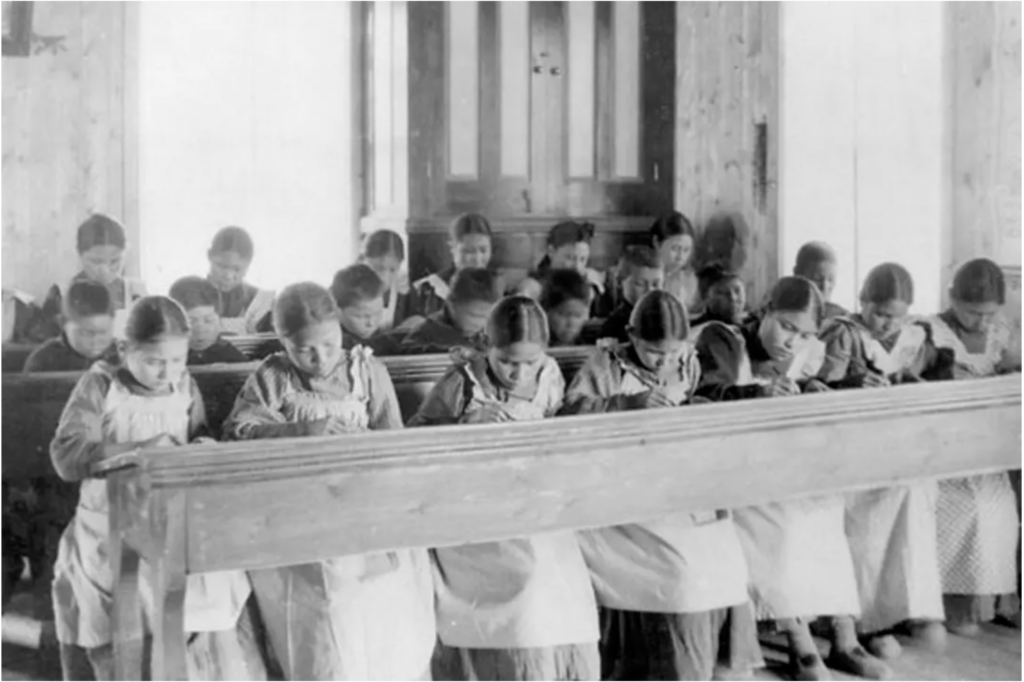
Despite movements to draw attention to Native communities via educational and cultural initiatives and the increasing use of land acknowledgements that call attention to North America’s violent history, it often feels as though Native Americans have been erased from the historical record – that they’re a people of our violent and genocidal past, not our shared present and future.
In reality, nothing could be further from the truth.
Make no mistake – the traumas of our nation’s history still reverberate across our present moment. Colonization leaves a long shadow, and those countries, including the U.S., that have benefited from the history of colonization in the Americas have atrocities to atone for.
But this article isn’t about that. Instead, it looks at what indigenous tribes and organizations are doing that’s having a positive impact in decolonizing the past and present – the ways in which intra- and cross-cultural education in Peru, South Dakota, and Delaware are shifting the balance of power, tossing manifest destiny and its educational counterparts to the wayside and instead creating opportunities for empowerment. Critically, these opportunities are based on individual tribes’ self-stated and self-directed needs, desires, goals, and hopes – not a colonial, prescriptive method for how to be more “American.”
Let’s turn to the Amazon for just one example of what this looks like.
Ese’Eja Nation

ACEER has long worked on the ground in Peru, in a facilitative capacity, with the Ese’Eja indigenous communities, with which it has a rich educational exchange. With a goal of sharing knowledge, resources and simple, affordable conservation technologies in the region, ACEER works with Ese’Eja community leaders to build partnerships and organizations outside of the tribe, including with One Tree, Leaf Pack, and National Geographic.
The tribe, meanwhile, shares its extensive ancestral knowledge of sustainable living practices with both partner organizations and tourists, so environmentally conscious students and visitors can learn new ways to bring an Amazonian perspective home with them, to put into practice in their own communities. In other words, the relationship is one of true exchange.
Ese’Eja Nation:
“It’s important that our people never forget our ancestors, trust in the forest, and share our indigenous knowledge with a global audience.” (Ese’Eja Nation, 2017, p. 120).
Relationships with Ese’Eja and foreigners didn’t start out this way. In fact, the history of the Ese’Eja will sound similar to those familiar with the impacts of colonization in the Americas.
Once a tribe of more than 15,000 that lived on approximately 1.2 million hectares of lush Amazonia, the Ese’Eja found both their population and land drastically reduced through colonization – including the diseases and enslavement that accompanied it – and deforestation starting in the 1890s. Now, only 600 members of the Ese’Eja occupy less than four percent of their ancestral land (Ese’Eja Nation, 2017, p. 14).
Just twenty-thousand hectares remain across three communities: Infierno, Palma Real and Sonene. Perhaps ironically – at least from a conservation standpoint – much of this ancestral land was lost when Peru created the Tambopata National Park. The land the Ese’Eja lost included historical sites, cemeteries, and longtime hunting, fishing and gathering grounds, and they risk losing far less tangible aspects of their history and culture as well (Ese’Eja Nation, 2017, p. 13).
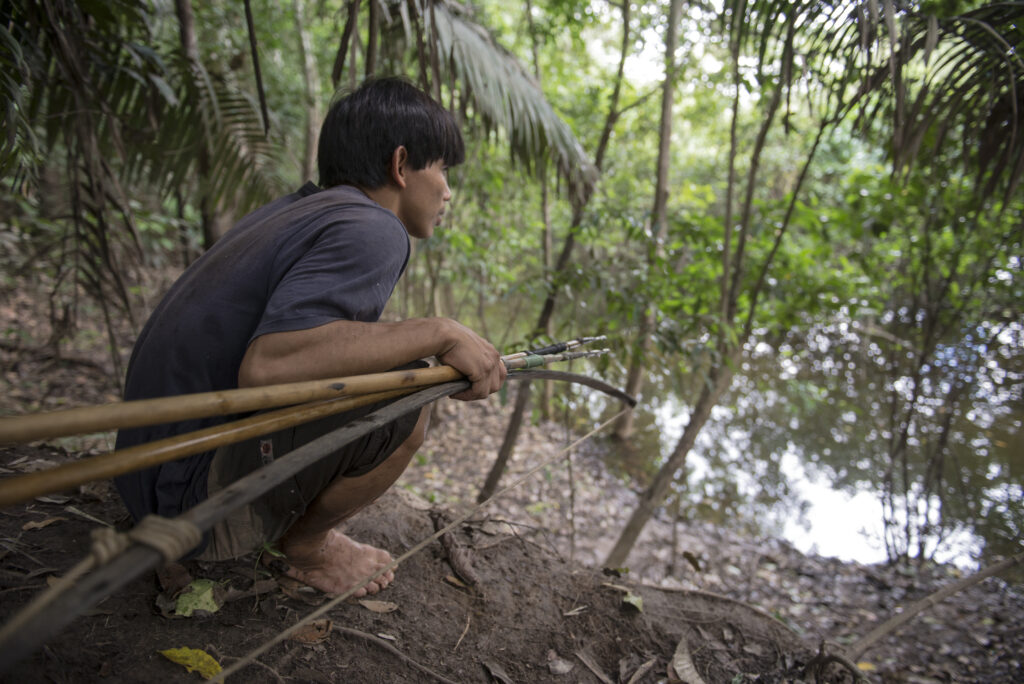
Most teachers in Ese’Eja schools do not speak the Ese’Eja language, placing the community’s culture at risk of further erosion. Students are also now learning new and different skills to engage with a rapidly changing world. While boys still learn how to make a bow and arrow, and girls still practice the art of basket weaving with palm fronds and vines, a greater dependence on outsiders makes preserving cultural traditions increasingly difficult. Students are often encouraged to study, but higher ed – and even secondary school – are often elusive due to expense and the communities’ rural locations (Ese’Eja Nation, 2017, p. 19).
Here’s where tribal ingenuity and partnerships come in. ACEER and the Ese’Eja coordinate a “Conservation Learning Web” to network both formal and experiential learning opportunities for students and teachers. The web incorporates teachers, students and schools in a regular classroom, but the networking sites link the more traditional method of education with a host of guest speakers and volunteer and cross-disciplinary learning opportunities via nonprofits, government agents, universities and family members.
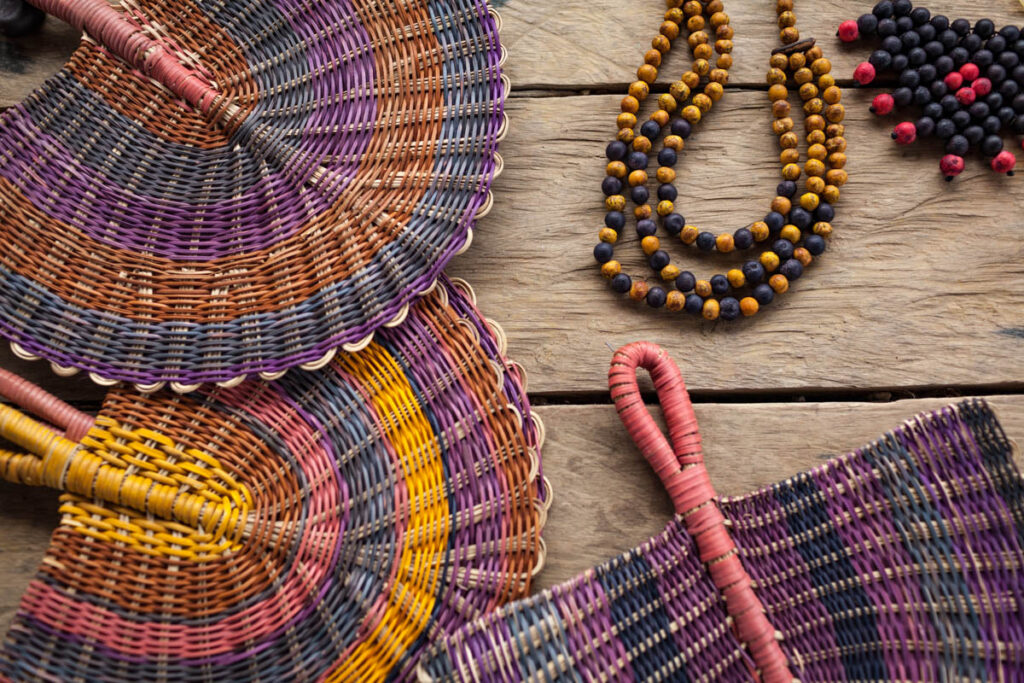
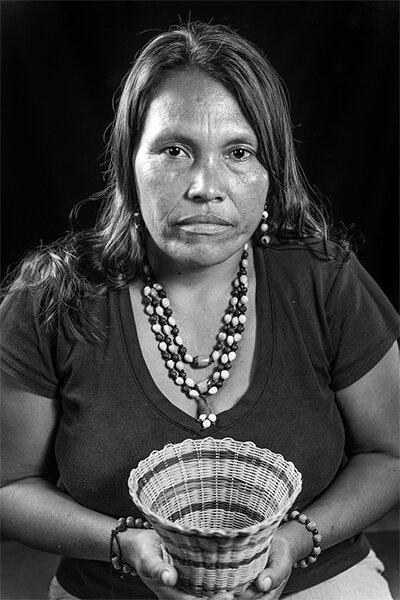
Meanwhile, the Ese’Eja also build their own initiatives to teach about conservation and the rainforest. These include a partnership with Rainforest Expeditions, a Peruvian ecotourism company. RE co-manages the Posada Amazonas lodge, which is owned by the Ese’Eja and run by members of its Infierno community with the goal of introducing tourists to the Tambopata jungle. The Ese’Eja will ultimately take over Posada Amazonas’ management entirely, and currently host Ese’Eja Days, in which they invite the lodge’s guests and RE travelers. During Ese’Eja Days, travelers visit the Heritage House, the Ese’Eja community’s main public house, which is home to a heritage museum that exhibits antique photos, clothing, ceramics and stone instruments alongside contemporary handicrafts. While there, visitors can also learn about traditional artwork and crafts, and watch artisan demonstrations of their crafts. Then, visitors can head to a local sustainable fishing pond, where they can learn about traditional cane fishing and take a boat ride before enjoying a traditional Ese’Eja lunch.
Ese’Eja women have also started a women’s artisanal co-op, using natural resources from the amazon to create their artesania. Fabric made from fibers, seeds and treated bark becomes brightly colored clothing using natural, plant-based dyes. The women also make hats, baskets, fans and jewelry – all a way of not only adding to their household income, but also preserving Ese’Eja traditions for future generations and sharing the stories of the Ese’Eja with those who purchase their goods (Ese’Eja Nation, 2017, p. 146).
For More Information
- ACEER’s Conservation Learning Web, visit aceer.org/conservation-learning-web
- Posada Amazona and Ese’Eja Day, visit www.rainforestexpeditions.com/amazon-lodge/posada-amazonas and www.rainforestexpeditions.com/experiences/ese-eja-day
- The Ese’Eja, visit www.eseeja.org
Delaware Teachers

ACEER is now working to incorporate similar culturally sensitive environmental educational strategies, that work so well in the Amazon, in schools and tribal communities in the U.S. Specifically, ACEER is working with Delaware teachers and members of the Lenape Indian Tribe of Delaware in the US, taking the lessons from Amazonia and applying it in a U.S. context.
That starts with expanding the network already established in Peru. As part of its “Bringing the Amazon Rainforest Home” campaign, from June 20-30, 2022, ACEER will host fifteen teachers from three Delaware counties to build a science program that works to foster cross-cultural understanding. This program will work with ACEER’s network of professionals working in the Amazon, specifically to build connections between the Ese’Eja community, conservation leaders, teachers in Peru, and students and teachers in the U.S.
How? Teachers in Delaware will work with ACEER’s network in Peru to help build connections between the Ese’Eja and communities in the U.S.
“A major focal point will be between the Ese’Eja and the Lenape,” ACEER Vice President Roger Mustalish said.
Meanwhile, Mustalish added, Delaware-based students and teachers will also work with the individual tribes to build a curriculum centering indigenous knowledge. From there, the Delaware Department of Education will upload the Delaware teachers’ curricula onto their official website, to allow all Delaware teachers to download lesson plans
The goal? To “showcase traditional ecosystem knowledge of indigenous peoples while also addressing Delaware’s new science teaching standards,” Mustalish said.
Due to the pandemic, the program was forced to move some of its programming online. ACEER hosted a virtual seminar series to begin to bridge the geographic divide in a virtual space. Then, last summer, some of the summer institute was held in person at the Stroud Water Research Center in Chester County, Pennsylvania. Teachers from Peru and the U.S. met with members of the Lenape community to learn about Lenape medicinal plants and aquatic ecology.
However, there doesn’t necessarily have to be cross-continental partnerships in order for indigenous education to address issues facing tribes throughout the Americas. All it takes is community.
Twenty-first century Tribal education raises several questions perhaps best addressed through community effort: Who teaches culture? Who teaches language? Whose responsibility is it, and how does that realistically happen?
The North American Midwest may also have some answers.
For More Information
- Bringing the Amazon Rainforest Home campaign, visit aceer.org/bringing-the-amazon-home
- Delaware Teachers Institute Summit at the Stroud Water Research Center, visit aceer.org/aceer-bringing-the-amazon-rainforest-home
Lakota Nation
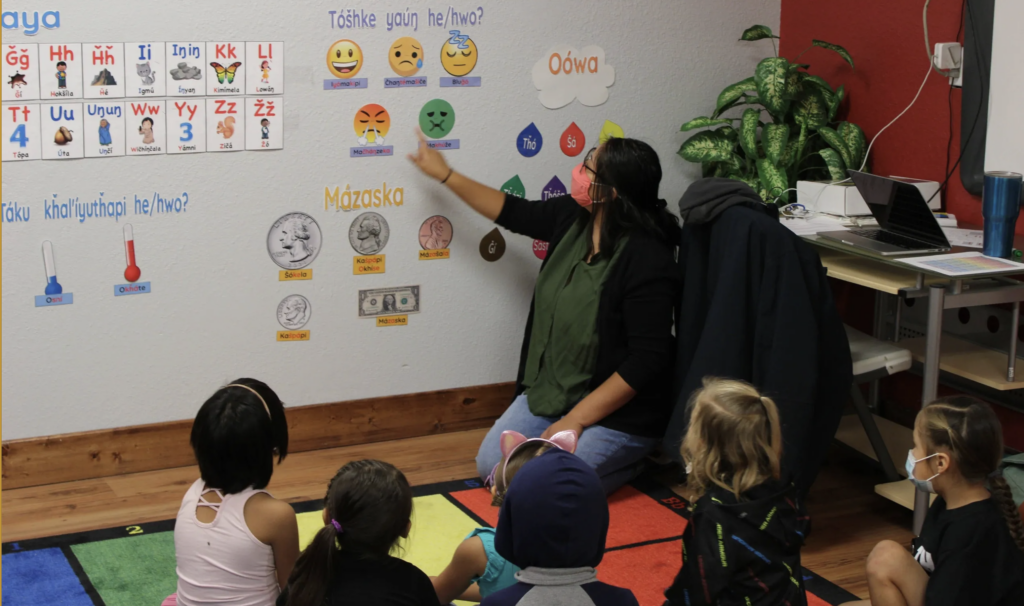
In South Dakota, Lakota members are also building strength and community through education – specifically a decolonizing approach to education. Launched in August of 2020, The Wakanyeja Tokeyahci Lakota Immersion School aims to educate within a Sicangu Lakota lens by centering wot̄akuye, the Lakota concept of kinship and interrelatedness.
In the classroom, this means a four-pronged approach to combining individualized student learning, project-based learning in a cultural context, an emphasis on critical thinking and problem solving, and whole family and engagement and support. The goal is to address the twin crises of a failing education system and the loss of the Lakota language.
“Wakanyeja kin lakol inajin heca nake nule waun walo.”
Wakanyeja Tokeyahci Lakota Immersion School mission statement
“We envision that our children will stand with all that is Lakota and be prepared to take on anything.”
The nonprofit has started an immersion school and currently includes kindergarten and first grades while working on accreditation. Young brains are sponges for language learning, which brings with it all the cultural references, contexts and perspectives that, as with the Ese’Eja, are in danger of being lost.
“I think all of our fluent Lakota speakers, all of them, are 55 and older,” said John Godoy, a member of Lakota Nation who works with the nonprofit on health initiatives, to try to lower health disparities experienced by tribal members. The school works to eliminate disparities and prevent cultural erosion through linguistic disappearance and all that language links to.
“They’re trying to find a way to integrate language, but also that traditional philosophy, into content, into education,” Godoy said, so the challenge rests within the community as opposed to entirely falling to students’ family members.
Students take classes entirely in Lakota, and also learn tribal songs, drums, dances, traditions and cultural practices – all in order to honor their past while looking to the future, and thereby fully embracing Wakanyeja Tokeyahci’s mission statement, “wakanyeja kin lakol inajin heca nake nule waun walo.”
For More Information
- For more information about the Wakanyeja Tokeyahci Lakota Immersion School, visit https://sicangucdc.org/wakanyeja-tokeyahci.

Education is always a matter of building community and networked relationships. Decolonial education practices don’t happen overnight, but it’s the constellating – the linking of individuals to form communities, that make all the difference. Those links may be fostered within a single community, or they may reach across continents.
Either way, indigenous and tribal education is a powerful reminder that Native Americans, First Nations members, and indigenous tribes across the Americas are all, adamantly and without question, part of our hemisphere’s present, and future.
References:
- ACEER Foundation. (n.d.). Bringing the Amazon Rainforest Home. https://aceer.org/bringing-the-amazon-home/. Retrieved April 4, 2022.
- ACEER Foundation. (n.d.). Conservation Learning Web. https://aceer.org/conservation-learning-web/. Retrieved April 4, 2022.
- ACEER Foundation. (n.d.). Ese’Eja. https://aceer.org/eseeja/. Retrieved April 4, 2022.
- Ese’Eja Nation. (2017). Ancestral Lands of the Ese’Eja: The True People.” ACEER.
- Herndon, Astead W. (Host). (2021, July 16). State Sponsored Abuse in Canada (No. 1,271) [Audio podcast episode]. In The Daily. New York Times. https://www.nytimes.com/2021/07/16/podcasts/the-daily/canada-indigenous-residential-schools.html.
- Rainforest Expeditions (n.d.). Ese Eja Day. https://www.rainforestexpeditions.com/experiences/ese-eja-day/. Retrieved April 4, 2022.
- Rainforest Expeditions (n.d.) Posada Amazonas. https://www.rainforestexpeditions.com/amazon-lodge/posada-amazonas/. Retrieved April 4, 2022.
- Sicangu Community Development Corporation. (n.d.). Wakanyeja Tokeyahci Lakota Immersion School. https://sicangucdc.org/wakanyeja-tokeyahci. Retrieved April 4, 2022.
This was the best explanation of the “Bringing the Amazon Home” that I have ever seen!
I appreciate it sooo much!
I hope one day we will be boasting about our Lenape Immersion School and Cultural Center, too!
Wanishi ta!
Thank you!